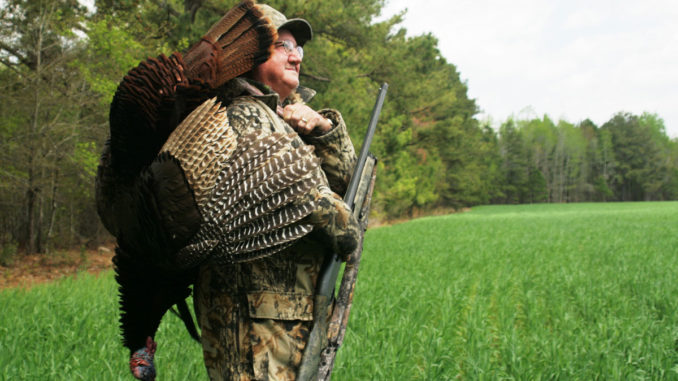
Don’t give up as spring turkey season winds down; even pressured gobblers will make a fatal mistake down the stretch.
Tactics for tagging a gobbler in the waning days of the season is often dramatically different than strategies for early season success. Late-season hunting typically requires a diverse skill set that includes patience, stealth, diversity in calling capabilities and mental toughness to commit to strategy.
By the tag end of the season, gobblers have been hammered for weeks by recurring and unwelcome human intrusions, and they become educated to human tendencies. Early season tactics can still be successful on those areas with relatively unpressured turkeys, but for most gobblers, strategy shifts are vital.
Terry Hiers of Blackwater Hunting Service in Ulmer, S.C., has learned in his years of guiding some helpful strategies for late-season hunting.
“The last hunt of the season is just as important to me as the first one, but with a season of hunting pressure, the dynamics change in the turkey woods,” Hiers said. “The first encounter with a turkey is usually the best opportunity to take him, and if we don’t kill him, I’ll have to change my pattern when I hunt that same bird and area later on. I believe gobblers pattern hunters, specifically the calls and tactics they use, so I change my patterns in late season.”
Hiers (803-541-4868) prefers the soft and subtle method, and even more so late in the season. Hunting an area with previously hunted gobblers, Hiers often approaches the location from a different direction route and employs different calling tactics and perhaps even different calls.
“I like using mouth calls, but I’ll use different ones in areas I’ve worked previously,” he said. “Plus, the specific calls are usually varied in late season. If I yelped to that gobbler before, I may start with clucks and purrs in late season. Once I get a feel for what the gobbler will respond to, I can change my strategy based on what works on that day.”
Hiers said that, in most cases, late-season gobblers have heard a lot of calls, and if he uses an aggressive yelp or cutt too quickly, he can’t take it back.
“I’ve learned that starting slow enables me to ramp up the volume and excitement of calls I use without unnecessarily alarming gobblers,” he said. “But getting too aggressive immediately can shut a bird down. I may end up with aggressive cutts and other loud calls to get him to approach, but it’s not the first thing I do in late-season.”
Hiers said one tip is that very aggressive tactics can work.
“When other options fail, I like to run a tube call with loud, aggressive fighting purrs, and this occasionally works exceptionally well late in the season,” he said. “It’s more of a last-chance call that can produce a gobbler in a hurry, but I’m prepared to fail most of the time with this tactic. The same is true for gobbling at another longbeard in late season. With many hens nesting, the competition among gobblers can be elevated. These calls are part of my overall plan but are tactics that only occasionally work in late season. But when they do work, it’s usually a very exciting hunt.”
John Tanner, a call maker from Hemingway, S.C., said food and socialization never go out of season for turkeys and are always a part of his late-season plan.
“A good food plot offers turkeys food and social contact, and the visibility of other turkeys is a plus,” he said. “Plots are good anytime of the season, but during late season, they can be an excellent resource. I’ll use soft clucks and purrs with a variety of different calls to mimic multiple hens feeding. The use of decoys can be a very good ally for hunting food plots because of the visibility factor.”
Tanner said it can be a waiting game in terms of turkey activity, but food plots and green fields are potentially productive throughout the day.
“Hens usually come and go throughout the day, so if I’m busy early and can only go mid-day or even late-afternoon, food plots and open fields are at the top of my target list,” he said. “Whether I can hunt a couple hours or half a day, they have what gobblers are looking for: the potential to attract hens.
Tanner said with fewer hens available, gobblers may be more competitive for those hens. It’s a situation that works as an advantage late in the season anywhere, not just on food plots.
“It’s a good idea to move and check multiple areas,” he said. “For example, don’t stay in a roost area all morning. After early morning, gobblers are on the move and are susceptible to calls. Be prepared for anything in terms of a gobbler’s behavior. A longbeard may gobble and come in on a string, but more often very cautiously. I’m always vigilant for the silent approach in late season.”

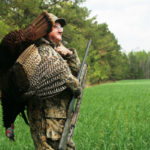
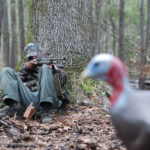
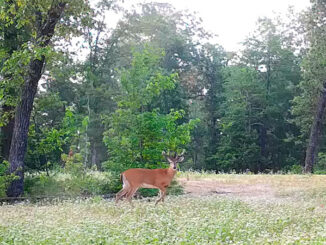
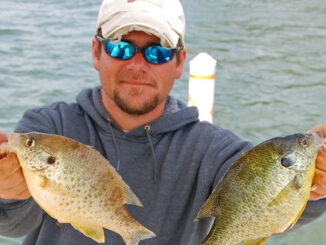
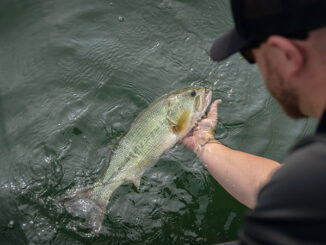

Be the first to comment